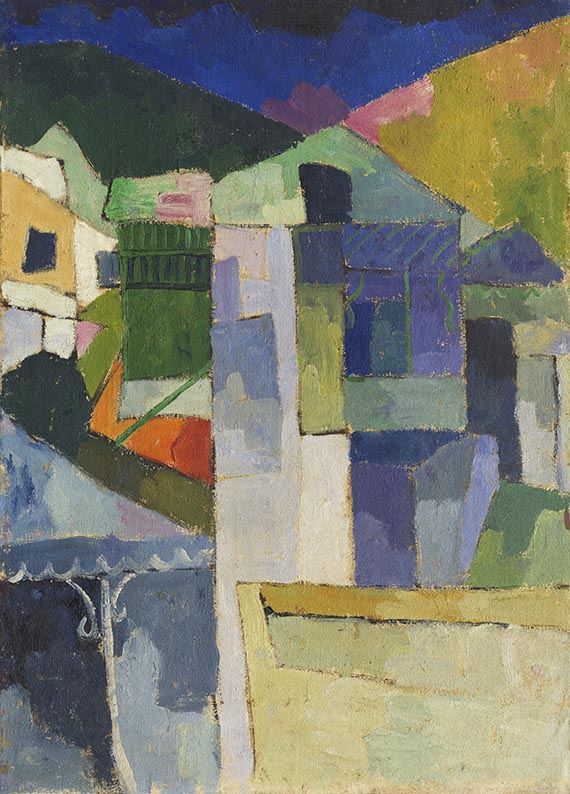Dictionary


Early Renaissance
Between 1410/20 and 1500, a fundamental change took place in artistic practise: artists no longer executed sublimated works in the Gothic Soft Style, which was largely characterised by a sacral symbolic language. Instead, the most important artistic tasks became the research of reality according to the rules of the natural sciences, and the illusionistic reproduction of the immediate world of the senses. This change found expression in all forms of art.
Religious subjects continued to dominate painting. But the new insight was manifested in representations of landscapes and backgrounds, for example, which were no longer primarily understood as symbolic, but rather detailed observations of nature. In a play of light and shadow, objects and bodies no longer appeared two-dimensional, but were increasingly sculpturally modelled.
The development of central perspective was a milestone for painting and reliefs, because artists now had at their disposal a geometrical system for representing spaces, which they could use to correctly construct perspective in pictorial spaces.
The attempts to make man the measure of all things, found particular resonance in architecture, after the re-discovery of Vitruvius’ writings "De architectura libri decem". In the writings, the author compared the parts of a building with the proportions of the human body. Simultaneously, the re-discovery of the Vitruvius tracts triggered an unparalleled search for the remains of antique buildings and sculptures, in order that they might be studied in natura.
Key exponents of Italian early Renaissance art include Sandro Botticelli, Donatello, Paolo Uccello and Benozzo Gozzoli.
Between 1410/20 and 1500, a fundamental change took place in artistic practise: artists no longer executed sublimated works in the Gothic Soft Style, which was largely characterised by a sacral symbolic language. Instead, the most important artistic tasks became the research of reality according to the rules of the natural sciences, and the illusionistic reproduction of the immediate world of the senses. This change found expression in all forms of art.
Religious subjects continued to dominate painting. But the new insight was manifested in representations of landscapes and backgrounds, for example, which were no longer primarily understood as symbolic, but rather detailed observations of nature. In a play of light and shadow, objects and bodies no longer appeared two-dimensional, but were increasingly sculpturally modelled.
The development of central perspective was a milestone for painting and reliefs, because artists now had at their disposal a geometrical system for representing spaces, which they could use to correctly construct perspective in pictorial spaces.
The attempts to make man the measure of all things, found particular resonance in architecture, after the re-discovery of Vitruvius’ writings "De architectura libri decem". In the writings, the author compared the parts of a building with the proportions of the human body. Simultaneously, the re-discovery of the Vitruvius tracts triggered an unparalleled search for the remains of antique buildings and sculptures, in order that they might be studied in natura.
Key exponents of Italian early Renaissance art include Sandro Botticelli, Donatello, Paolo Uccello and Benozzo Gozzoli.
Offers
Headquarters
Joseph-Wild-Str. 18
81829 Munich
Phone: +49 89 55 244-0
Fax: +49 89 55 244-177
info@kettererkunst.de
Louisa von Saucken / Undine Schleifer
Holstenwall 5
20355 Hamburg
Phone: +49 40 37 49 61-0
Fax: +49 40 37 49 61-66
infohamburg@kettererkunst.de
Dr. Simone Wiechers / Nane Schlage
Fasanenstr. 70
10719 Berlin
Phone: +49 30 88 67 53-63
Fax: +49 30 88 67 56-43
infoberlin@kettererkunst.de
Cordula Lichtenberg
Gertrudenstraße 24-28
50667 Cologne
Phone: +49 221 510 908-15
infokoeln@kettererkunst.de
Hessen
Rhineland-Palatinate
Miriam Heß
Phone: +49 62 21 58 80-038
Fax: +49 62 21 58 80-595
infoheidelberg@kettererkunst.de
We will inform you in time.




